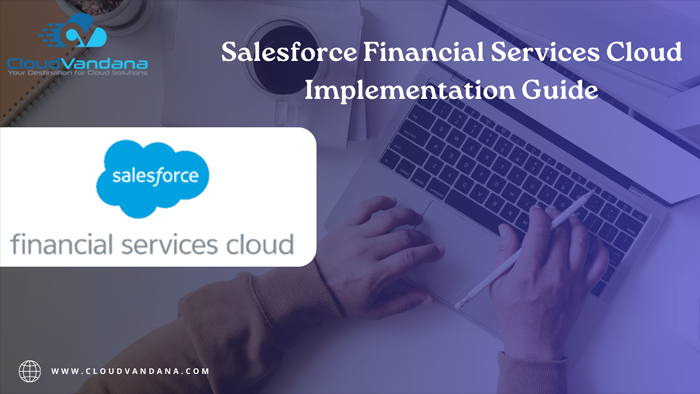Salesforce Financial Services Cloud Implementation Guide

Discover the essential steps and best practices for successful Salesforce Financial Services Cloud implementation and streamline your financial services operations to improve client engagement. In today’s fast-paced and highly competitive financial services industry, firms must leverage cutting-edge technology to unlock their true potential. One such technology that has revolutionized how financial services firms operate is Salesforce’s Financial Services Cloud. This comprehensive implementation guide aims to provide a detailed roadmap on how you can successfully implement Salesforce Financial Services Cloud and harness its power to drive organizational growth and achieve unparalleled customer satisfaction. Understanding Salesforce Financial Services Cloud What is Salesforce Financial Services Cloud? Salesforce Financial Services Cloud is a purpose-built platform specifically designed to meet the unique needs of financial services firms. It offers a comprehensive set of tools and features that enable organizations to streamline their operations, enhance collaboration among team members, and provide personalized experiences to their clients. By leveraging the power of artificial intelligence and predictive analytics, Financial Services Cloud empowers firms to gain valuable insights, make informed decisions, and drive business growth. Key Features of Salesforce Financial Services Cloud 1: Real-time synchronization with external data sources ensures that client information is always up to date. 2: Role-based access control allows for granular control over data visibility and security. 1: Activity tracking allows advisors to monitor client interactions, ensuring timely follow-ups and engagement. 2: Personalized communication capabilities enable targeted messaging based on client preferences and interests. 3: Interactive dashboards provide a holistic view of client portfolios, facilitating data-driven conversations and informed decision-making. 1: Team collaboration tools facilitate real-time communication and knowledge sharing among advisors, support staff, and management. 2: Task management features enable the assignment and tracking of client-related tasks, ensuring accountability and timely completion. 1: AI-powered analytics tools identify patterns and trends, helping advisors proactively address client needs and preferences. 2: Predictive recommendations enable advisors to offer tailored financial solutions based on the client’s circumstances and goals. Implementation Process Successfully implementing Salesforce Financial Services Cloud requires careful planning and execution. Here is a step-by-step guide to help you navigate through the implementation process: Clearly define your objectives and identify the specific needs and requirements of your organization. Determine the key performance indicators (KPIs) that will measure the success of your implementation. Configure the Financial Services Cloud to align with your specific business processes. Customize the platform to meet your organization’s branding and user interface requirements. Integrate with existing systems, such as CRM, marketing automation, and data management tools. Migrate your existing client data to the Financial Services Cloud, ensuring data integrity and accuracy. Integrate with external data sources to ensure real-time synchronization and access to up-to-date information. Provide comprehensive training sessions to users, empowering them with the necessary skills to maximize the potential of the Financial Services Cloud. Foster a culture of adoption within the organization, highlighting the benefits and value of the platform. Regularly assess and optimize your implementation to leverage new features and enhancements offered by Salesforce. Continuously gather feedback from users and clients to identify areas for improvement and address any challenges. Conclusion By implementing Salesforce Financial Services Cloud, financial services firms can unlock their true potential and gain a competitive edge in the market. This in-depth implementation guide has provided you with key insights and a roadmap to implement the Financial Services Cloud in your organization successfully. Embrace the power of Salesforce and propel your financial services business to new heights of success, client satisfaction, and growth. For more information and Salesforce assistance, visit CloudVandana and schedule a free consultation. Call Now. Request a Free Consultation YOU MIGHT ALSO LIKE






